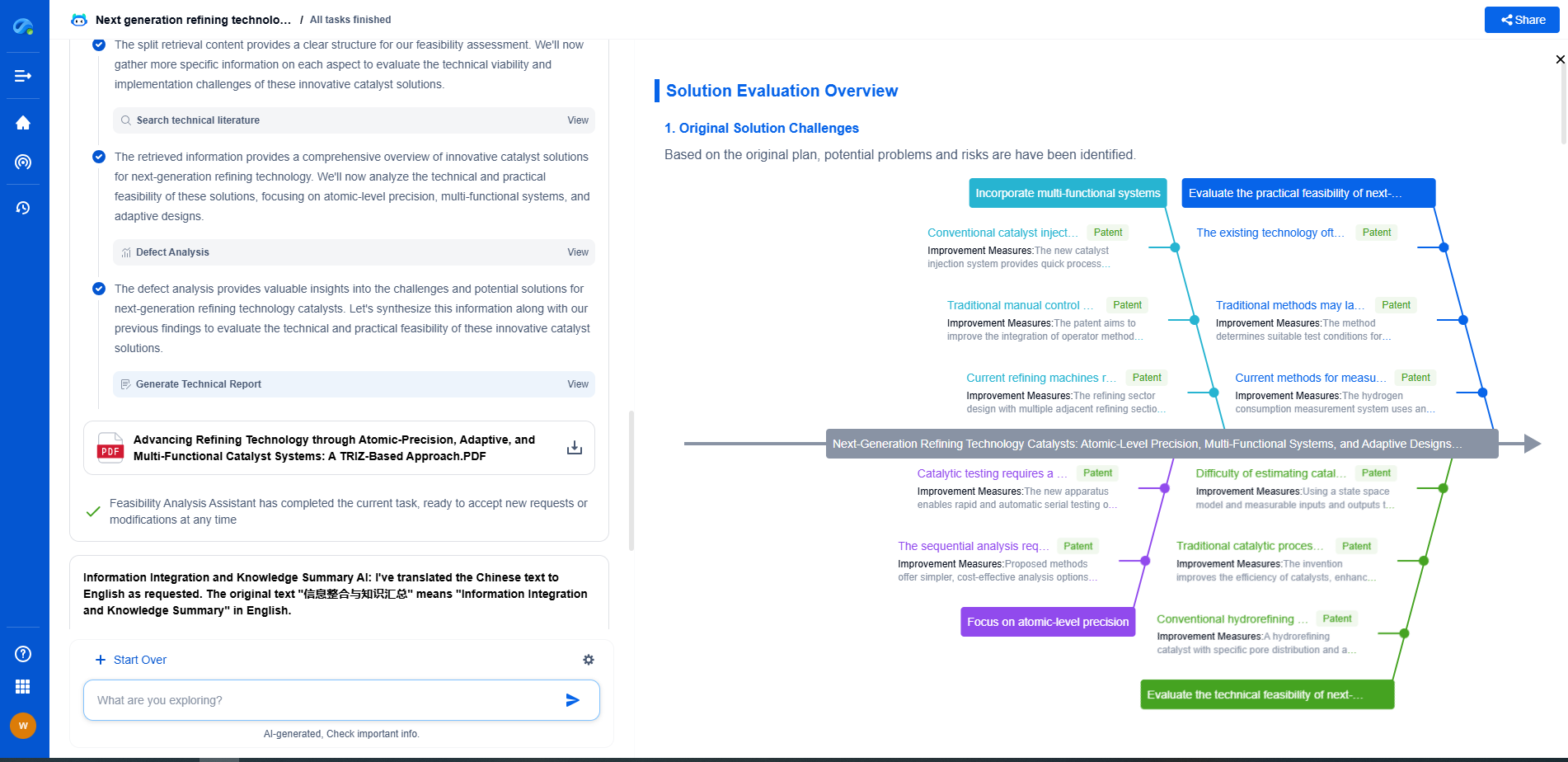Why Do Lithium-ion Batteries Catch Fire? Thermal Runaway Explained
JUN 20, 2025 |
Lithium-ion batteries have become an integral part of our daily lives. From smartphones to electric vehicles, their high energy density and long life make them indispensable. However, a dark side lurks behind these technological marvels: the risk of catching fire. Understanding why and how lithium-ion batteries can ignite is essential for safe usage and technological advancement. This blog delves into the phenomenon known as thermal runaway, the primary culprit behind these fiery incidents.
What is Thermal Runaway?
Thermal runaway is a self-reinforcing process where an increase in temperature causes further increases, often leading to a destructive result. In the context of lithium-ion batteries, it refers to a scenario where the battery's internal temperature rises uncontrollably, potentially leading to a fire or explosion. This process can be triggered by various factors, which we will explore further.
Causes of Thermal Runaway
Overcharging: One of the most common causes of thermal runaway is overcharging. When a lithium-ion battery is charged beyond its capacity, it can lead to excessive heat generation. This additional heat increases the internal temperature, potentially initiating thermal runaway.
Internal Short Circuit: Manufacturing defects or physical damage can cause an internal short circuit within a battery. When the internal components come into contact, it can generate heat rapidly, leading to thermal runaway.
External Heat Exposure: Batteries exposed to high external temperatures, such as being left in a hot car, are more susceptible to thermal runaway. The high ambient temperature can increase the battery’s internal temperature, pushing it past safe limits.
Battery Aging: Over time, batteries undergo chemical changes and degradation, which can increase the risk of thermal runaway. These changes can create internal resistance, generating heat that may initiate the process.
Impact of Thermal Runaway
Once thermal runaway begins, the battery's internal temperature can rise rapidly. This can lead to the release of flammable gases, which might ignite and cause a fire or explosion. The cascading effect often results in the failure of adjacent battery cells, leading to a more significant and potentially catastrophic event.
Safety Measures and Prevention
Battery Design Improvements: Manufacturers continuously work on improving battery design to minimize the risk of thermal runaway. This includes using better thermal management systems and safer chemical compositions.
Battery Management Systems (BMS): A BMS is crucial in monitoring battery temperature, voltage, and current. It can prevent conditions that lead to thermal runaway by shutting down the battery in the event of anomalies.
Proper Handling and Usage: Users must follow guidelines for charging and handling lithium-ion batteries. Avoiding overcharging, using recommended chargers, and preventing physical damage can significantly reduce the risk.
Environmental Considerations: Storing batteries in cool, dry environments and avoiding exposure to high temperatures can help prevent thermal runaway.
Conclusion
While lithium-ion batteries are generally safe, the potential for thermal runaway remains a concern due to the inherent risks associated with their high energy density. Understanding the causes and implementing preventative measures is critical for minimizing the risk of fires and ensuring the safe usage of these vital energy sources. Through continued advancements in technology and safety protocols, we can enjoy the benefits of lithium-ion batteries while reducing the hazards they pose.
Accelerate Breakthroughs in Fuel Cell and Battery Innovation—with the Power of AI
From solid-state battery breakthroughs to high-efficiency hydrogen fuel cells, keeping pace with fast-evolving chemistries, global patent landscapes, and emerging application pathways is an ever-growing challenge for R&D and IP professionals.
Patsnap Eureka, our intelligent AI assistant built for R&D professionals in high-tech sectors, empowers you with real-time expert-level analysis, technology roadmap exploration, and strategic mapping of core patents—all within a seamless, user-friendly interface.
Whether you're optimizing cathode formulations, evaluating electrolyte stability, or navigating the crowded patent space around battery pack design, Eureka empowers you to move faster and with greater confidence.
Start your journey with Patsnap Eureka today—streamline your research, enhance decision-making, and power the future of energy with AI-driven clarity.
- R&D
- Intellectual Property
- Life Sciences
- Materials
- Tech Scout
- Unparalleled Data Quality
- Higher Quality Content
- 60% Fewer Hallucinations
Browse by: Latest US Patents, China's latest patents, Technical Efficacy Thesaurus, Application Domain, Technology Topic, Popular Technical Reports.
© 2025 PatSnap. All rights reserved.Legal|Privacy policy|Modern Slavery Act Transparency Statement|Sitemap|About US| Contact US: help@patsnap.com

